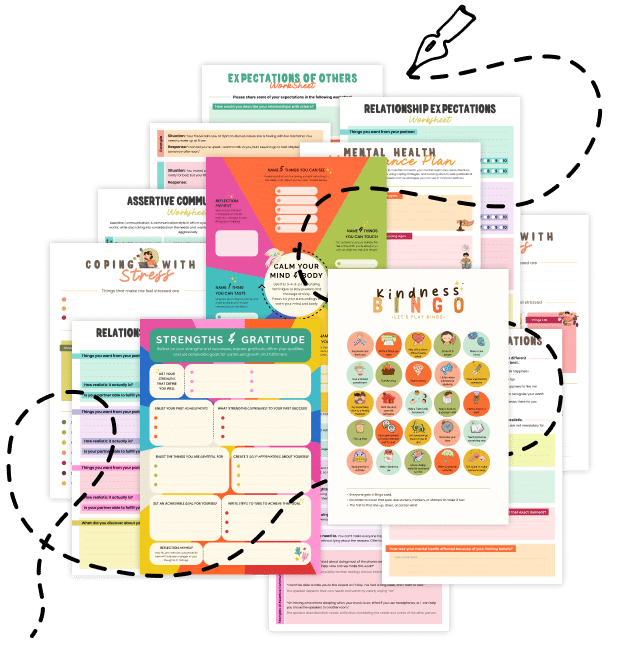20 Things About Self-Handicapping Behaviors
Learn how Self-Handicapping Behaviors fuel self-sabotage, often disguising themselves as “playing it safe” or “waiting for the perfect time,” and discover strategies to recognize and overcome these hidden barriers to success.
1. What Are Self-Handicapping Behaviors?
Self-Handicapping Behaviors are actions—or inactions—that create obstacles to your own performance, providing a ready-made excuse for potential failure. Examples include procrastinating, not preparing enough, or even intentionally missing opportunities.
2. Why People Do Self-Handicapping Behaviors
Fear of failure or judgment often fuels self-handicapping. By creating an external reason (like lack of preparation) for not succeeding, you protect your ego from the sting of “not being good enough.”
3. Procrastination Is a Prime Example
Putting things off until the last minute is a classic self-handicap. If you don’t study until midnight before the test, you can always blame any poor outcome on “running out of time” rather than ability.
4. The Perfectionism Link
Ironically, perfectionists can self-handicap by chasing an impossible ideal. They might never start a project because they fear it won’t be flawless, thereby avoiding direct confrontation with their perceived shortcomings.
5. Low Effort vs. Over Effort
- Low Effort: Doing the bare minimum so you can say, “I could have done better if I tried.”
- Over Effort: Taking on too many commitments or overly complex tasks, which also provides a built-in excuse: “I was too busy!”
6. Impacts Personal & Professional Life
Self-handicapping can sabotage relationships, career progress, and creative endeavors. By avoiding genuine effort, you limit your growth and risk missing important opportunities.
7. Psychological Toll
While it may protect self-esteem in the short term, chronic self-handicapping undermines confidence in the long run, perpetuating a cycle of underachievement and regret.
8. Social Factors
Some people self-handicap because they worry about social image. For instance, someone might say they partied all night before an exam—broadcasting a carefree persona but secretly dodging a fear of failing after studying hard.
9. Self-Handicapping Behaviors Links to Imposter Syndrome
Those with Imposter Syndrome often self-handicap to “prove” they’re not really competent. If they perform poorly, they can attribute it to lack of effort rather than face the idea they might lack skill.
10. Emotional Triggers
Stress, anxiety, or low mood can trigger self-handicapping. Avoiding or sabotaging tasks offers short-term relief from pressure but compounds problems later.
11. Subtle Forms of Self-Sabotage
Self-handicapping isn’t always obvious. It can manifest as constantly switching tasks (never finishing anything) or over-planning to the point of “analysis paralysis.”
12. Recognizing the Patterns
Look for repeated cycles: Do you regularly blame external circumstances for lackluster results? Do you wait for “the perfect conditions” that never arrive?
13. Reframing Mistakes
Shifting perspective—from seeing mistakes as personal failings to viewing them as “data” or learning steps—helps break the cycle. Accepting imperfection lets you genuinely try instead of preemptively sabotaging.
14. Setting Realistic Goals
Lofty, unrealistic goals can tempt self-handicapping—if the bar is too high, it’s easier to quit or sabotage early. Realistic, incremental goals keep you engaged and motivated.
15. Enlisting Accountability
When you share goals with a friend, mentor, or coach, you remove easy outs. This external accountability makes it harder to rationalize self-sabotaging behaviors.
16. Value of Small Wins
Consistent small successes build genuine confidence—reducing the “need” for self-handicapping as a protective mechanism. Celebrate each step forward to reinforce authentic self-belief.
17. Mindset and Growth
Developing a growth mindset—where you see abilities as fluid rather than fixed—lessens the urge to shield yourself from failure. Viewing setbacks as normal fuels persistence and resilience.
18. Stress Management
Finding healthy ways to cope with stress—like exercise, meditation, or talking with supportive people—reduces anxiety-driven excuses. Calmer minds are less prone to panic-based sabotage.
19. Therapy and Coaching
For entrenched patterns, professional help can clarify underlying fears and establish healthier coping strategies. Therapists or performance coaches specialize in breaking self-handicapping cycles.
20. Related Topics to Explore
- Naïve Realism: Learn how our own “obvious truths” can blind us to personal biases.
- Cognitive Defusion: Detach from negative thoughts that might push you to sabotage.
- Self-Talk Restructuring: Transform harsh inner dialogue into constructive mental coaching.
- Reframing Failure as Data: Shift your perspective on mistakes to spark continuous improvement.
Quick Tips to Overcome Self-Handicapping Behaviors
- Identify Your Patterns: Track when and how you avoid, delay, or sabotage tasks—awareness is the first step.
- Set Incremental Goals: Break big ambitions into smaller, achievable targets that won’t tempt you to quit early.
- External Accountability: Share plans with someone who will check in on your progress.
- Embrace Imperfection: Allow yourself to learn through trial and error, instead of aiming for flawless performance.
- Reflect Regularly: Journal your wins, setbacks, and the excuses you used—be honest about why those excuses popped up.
Self-handicapping may feel protective, but it ultimately blocks your real potential and satisfaction. By spotting these avoidance patterns, adjusting goals, and letting go of the fear of failing, you’ll free yourself to pursue your ambitions wholeheartedly. Share this article with friends or colleagues—help them break free from self-made barriers and discover the rewards of genuine effort!


